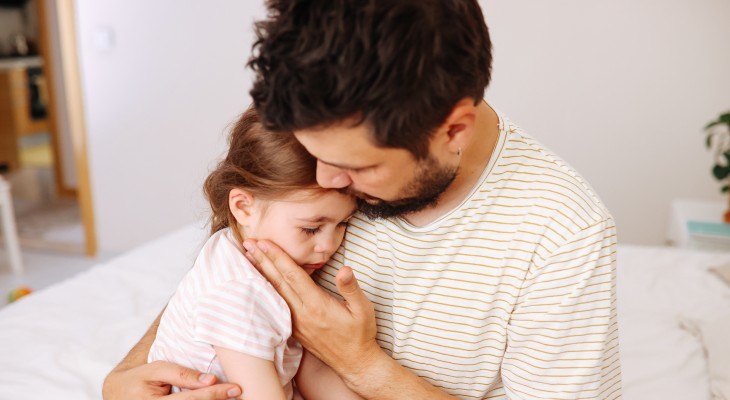
Diarrhea in children can be an unpleasant experience for both you and your child. Diarrhea occurs when your child's body is trying to rid itself of unwanted bacteria, viruses or substances such as toxins. A telltale sign of diarrhea is watery and loose stools along with a sense of urgency to use the bathroom.
The cause of diarrhea in kids can vary and range in severity. Many cases of diarrhea in children can often be treated from home or quickly addressed via a telehealth appointment.
Make an appointment with Telehealth Express Care at UC Davis Health
How to tell if your child has diarrhea
Symptoms of diarrhea in children can vary by age range. It's also important to note that there are some differences between constipation and diarrhea in kids.
Symptoms of diarrhea in babies ages 0-12 months
It can be hard to tell whether a baby has diarrhea since their stools are normally loose due to a liquid diet. A change in diet, such as a new formula, can also cause temporary watery or loose stools. Your baby might have diarrhea if you've noticed an increase in watery stools. Your baby might also be fussier than usual, which could be a sign that they might have uncomfortable digestion or cramps.
Symptoms of diarrhea in children ages 1 and older
The main symptom of diarrhea in kids is loose or watery stool and an urgent need to use the bathroom. Your child may also experience belly pain or nausea.
Symptoms of constipation vs. diarrhea in kids
Some stomachaches are signs of constipation rather than diarrhea. Knowing the difference between diarrhea and constipation is important to ensure the correct care for your child.
Your child could have constipation if:
- Their stomach pains are accompanied by little to no bowel movements for 2-3 days.
- If there is a bowel movement, the stool is hard and/or small in size.
- If they experience bowel movements that are difficult to pass, or if they are overexerting themselves when trying to pass.
- If there is a tiny bit of blood on the toilet paper after passing a bowel movement.
Learn the difference between diarrhea and constipation
What causes diarrhea in children?
Causes of diarrhea in kids can include:
- digestive issues associated with a food allergy or intolerance.
- bacterial or viral infection such as stomach flu or norovirus.
- foodborne or waterborne illness such as E.Coli or Salmonella.
- improper hand washing after touching or handling animals.
- side effect or reaction to a recent medication.
- gastrointestinal disorder.
How to treat diarrhea in children
Mild cases of diarrhea in children usually go away on their own within 1-2 days. If your child has a mild case of diarrhea, there are home treatment tips to help ease the discomfort.
- Give your child plenty of fluids to help prevent dehydration caused by diarrhea. Electrolyte drinks and water are especially helpful. Avoid sugary drinks such as juice and soda as those can worsen diarrhea symptoms.
- Over-the-counter antidiarrheal medications may be harmful for children. They are not recommended for children less than 2 years of age. Ask your child's health care provider before giving this type of medication to older children.
When should you seek care for diarrhea in kids?
You may want to talk to your child's pediatrician if your child has:
- diarrhea that lasts longer than 48 hours.
- a fever along with diarrhea.
- diarrhea that happens again and again – this could be a sign of a food allergy or intolerance.
- symptoms of dehydration (dark urine, decreased urine, dry eyes, lips and mouth).
If you have any questions or concerns about diarrhea in your child, you should also reach out to their pediatrician.
UC Davis Health offers Telehealth Express Care appointments to help treat diarrhea in children. This service is available for both UC Davis Health patients and non-patients. You can also check with your pediatrician's office if you want to be seen for an in-person appointment.
Connect to a provider through Telehealth Express Care at UC Davis Health
This blog was medically reviewed by Dean Blumberg, chief of pediatric infectious diseases.




